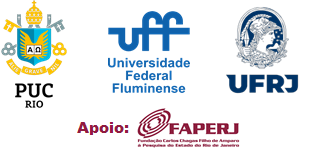

 |
 |
Ends, dynamics and algebraic structures of groups acting on the circle
Sebastien Alvarez (IMPA)
We study the following natural question: how does the algebraic structure of a group of diffeomorphisms of the circle
affects its dynamics, and reciprocally? For example, we know since Denjoy that a cyclic group of C2 diffeomorphisms
acts on the circle without an invariant Cantor set. Better: a theorem of Ghys, which relies on a work by Duminy,
states that the groups of analytic diffeomorphisms with an exceptional minimal set are virtually free.
A group G which admits an exceptional minimal set is discrete in a special sense: for any interval I intersecting the
minimal set, the restriction of the identity to I is isolated in the C1 topology among the set of restrictions to I of
the diffeomorphisms of G.
In this talk we intend to illustrate a paradigm which appears in recents work by Deroin, Kleptsyn, Navas and
Filimonov: this notion of discreteness separates groups with a simple dynamics and a well determined algebraic
structure (the group is virtually free or conjugated to an extension of a Fuchsian group), from groups with a rigid
yet rich dynamics.
It is a joint work with P. Barrientos (UFF), D. Filiminov (HSE Moscou), V. Kleptsyn (CNRS, Rennes), D. Malicet
(PUC), C. Meniño (PUC), A. Navas (USACH, Santiago), A. Raibekas (UFF), and M. Triestino (PUC).

|
|